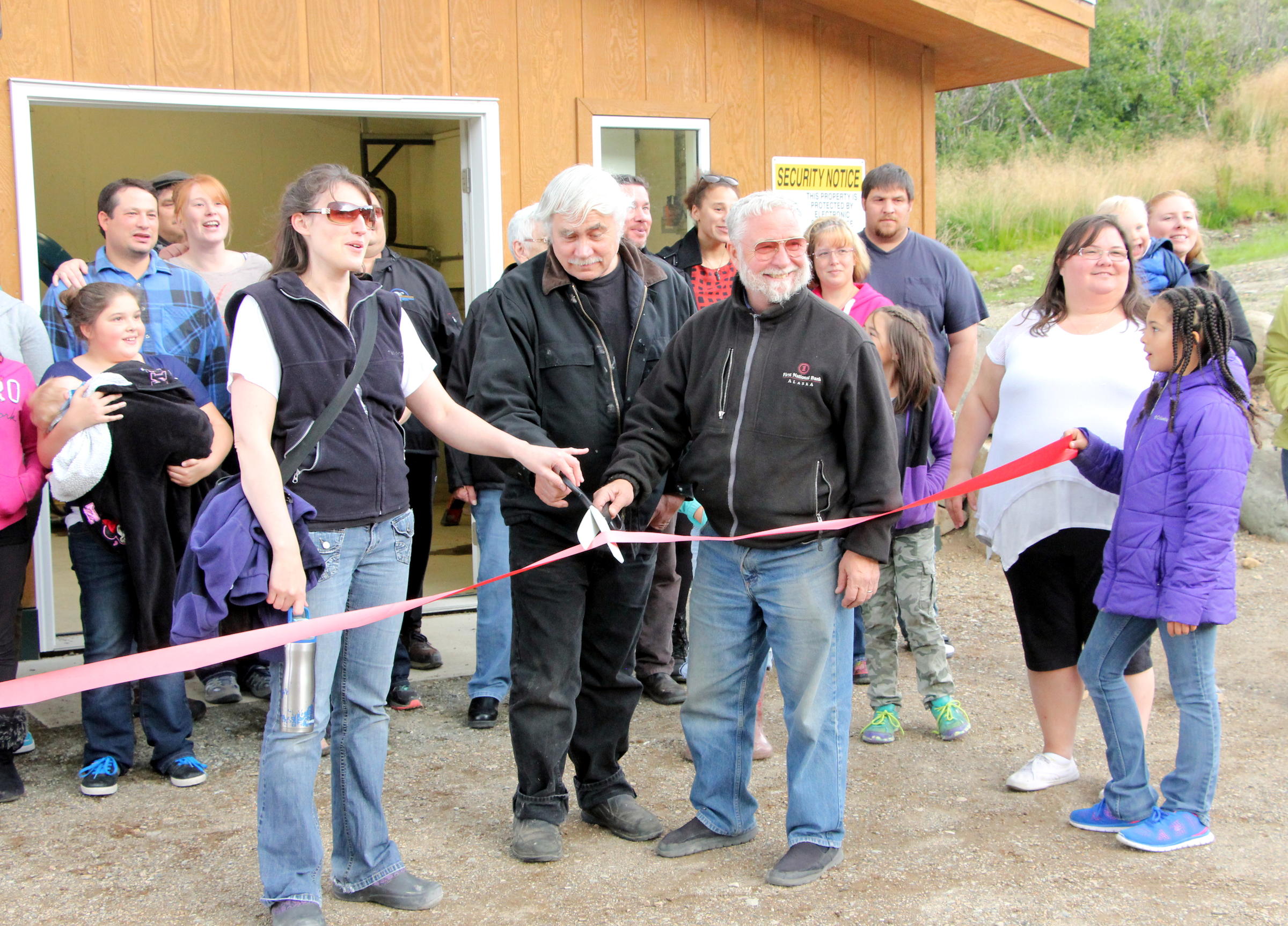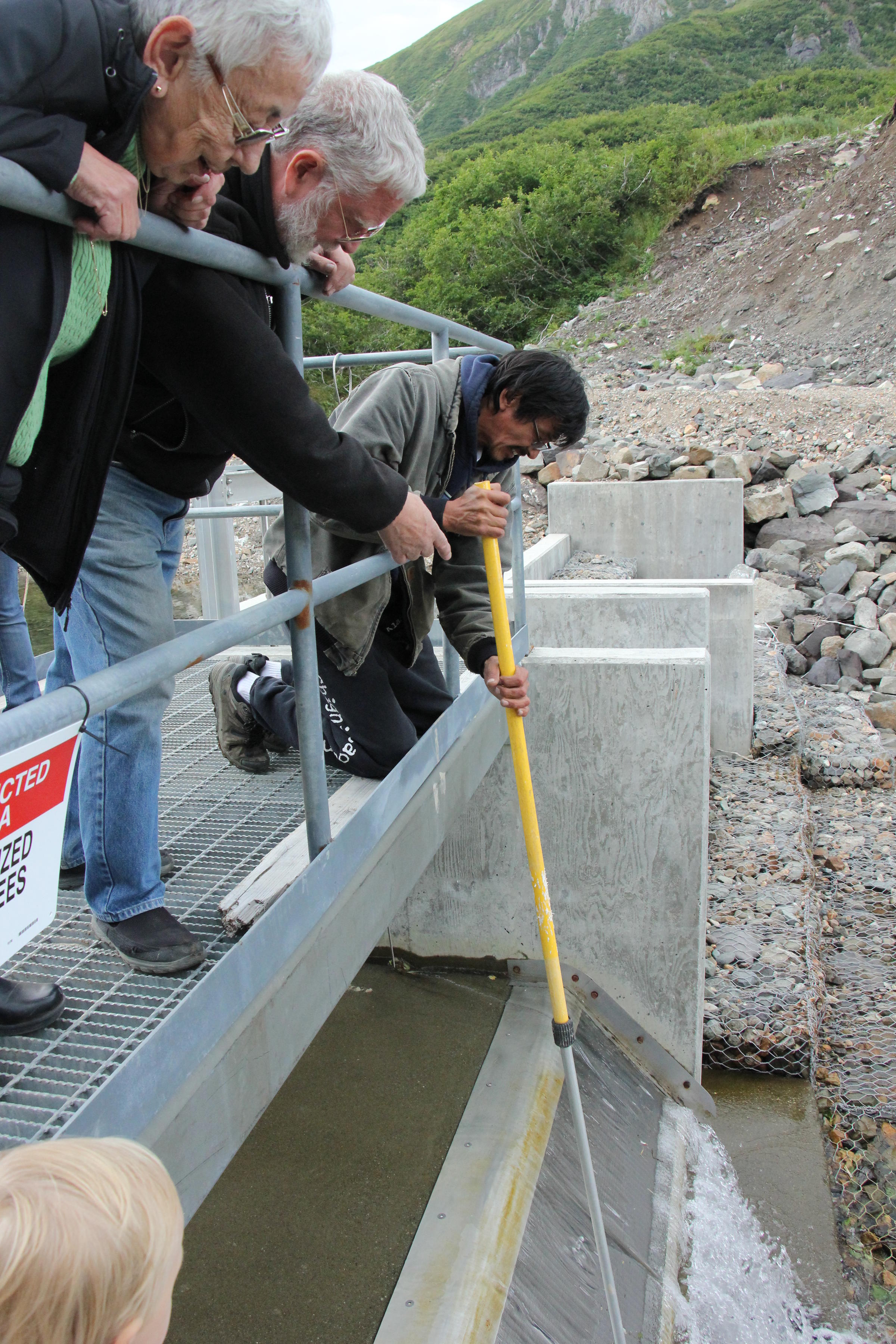
Packer Creek is a small stream that runs down a steep hill through the middle of Chignik Lagoon. Where before there were only small all-terrain vehicle trails, now there is a mile-long gravel access road along the creek, leading up to a new dam.
Walking to the ribbon cutting, hydro project manager Michelle Anderson pointed out where the new road construction cut into the glacial till in the hillside.
Though the extra space is nice, it’s low on Anderson’s list of the benefits of the project. The biggest advantage, she says, is getting away from diesel.
“Just the fact that we have to haul diesel here – there’s that much more chance to contaminate something,” she said.

The person who is perhaps most familiar with diesel in Chignik Lagoon is Larry McCormick, who operates the diesel plant and most of the other utilities in town.
“I’m the garbage man, the guy that operates the sewer system, also the fuel man — pretty much everything.”
McCormick has been working the diesel plant since it started decades ago, and now he and two other operators are learning to work with hydro.
At the top of Packer Creek, McCormick showed guests the 9-foot dam where water flows into a pipe through a metal screen.
“When it first came online in March, the screens were freezing, and there were a couple of times when we actually had to bust ice off the screen,” he said.
McCormick says when ice or debris clog the screen, the hydro can shut off and the diesel will kick back in. Then it’s his job to get the hydro running again. McCormick expects the year ahead will be full of these little challenges. Still, he says the hydro will be much easier to manage than the old diesel plant.
“If you ran a diesel engine for 1,000 hours, that’s 4 oil changes and that’s 20 gallons of used oil,” he said.
All that oil then has to be transported to a dump site and burned. McCormick says the hydro system requires just a little grease on the bearings every 1,000 hours.
“I’ve noticed I do have more time on my hands,” he said. “It’s not as much maintenance. [I] don’t have to worry about as many things going wrong with this.”
On the way back to town, McCormick gives a tour of the small hydroelectric power house. Inside, water flows from the pipe into a water turbine, generating up to 167 kilowatts of electricity.
The generator is humming, but McCormick says it’s nothing compared to the roar of the diesel plant.
“You wouldn’t hear me if we were in the diesel plant right now,” he said. “I’d have to be hollering and you’d have to wear ear muffs. This is really quiet.”
For the 70 residents of Chignik Lagoon, this is what clean energy sounds like.
